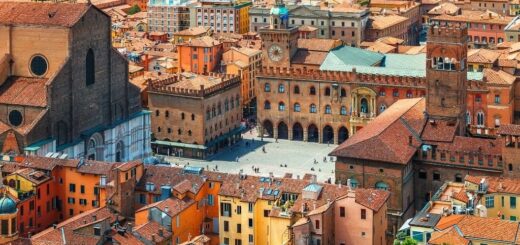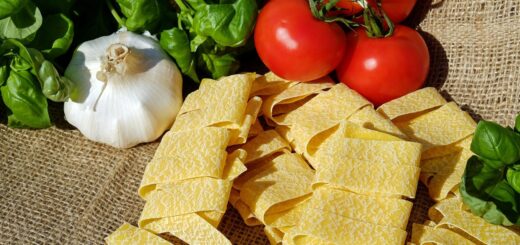France: Châteaux, Champágne and Croissants
Loire Valley,Champágne region, Paris
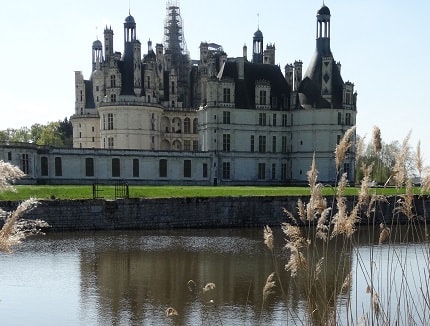
Amboise: 3 nights
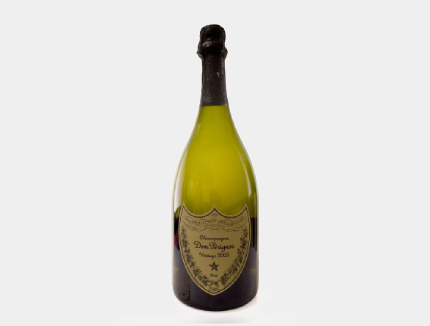
Épernay: 2 nights
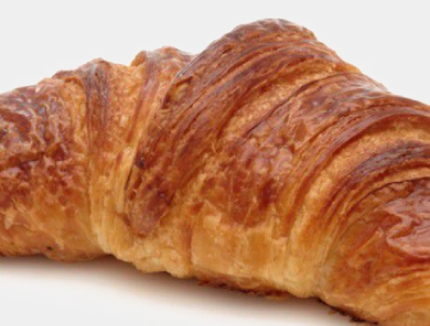
Paris: 2 nights
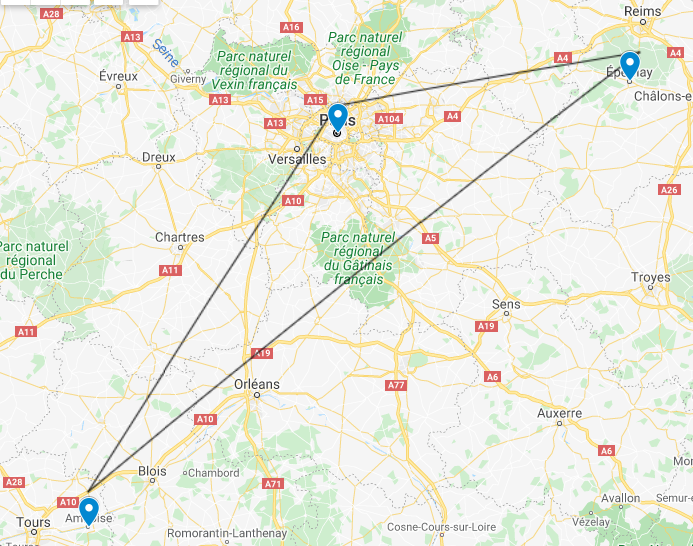
8 days Itinerary
Amboise: 3 nights
( 2 hours 15 min by train or car from Paris )
The Loire Valley, also known as the Garden of France for it’s rolling hills, vineyards and beautiful landscape, is a Unesco World Heritage site. It is the area in the middle and western stretch of the Loire River in Central France from Orléans to Angers. It is famed for its spectacular Châteaux, Gourmet food and superlative Wines.
Amboise is one of the charming towns of the region.
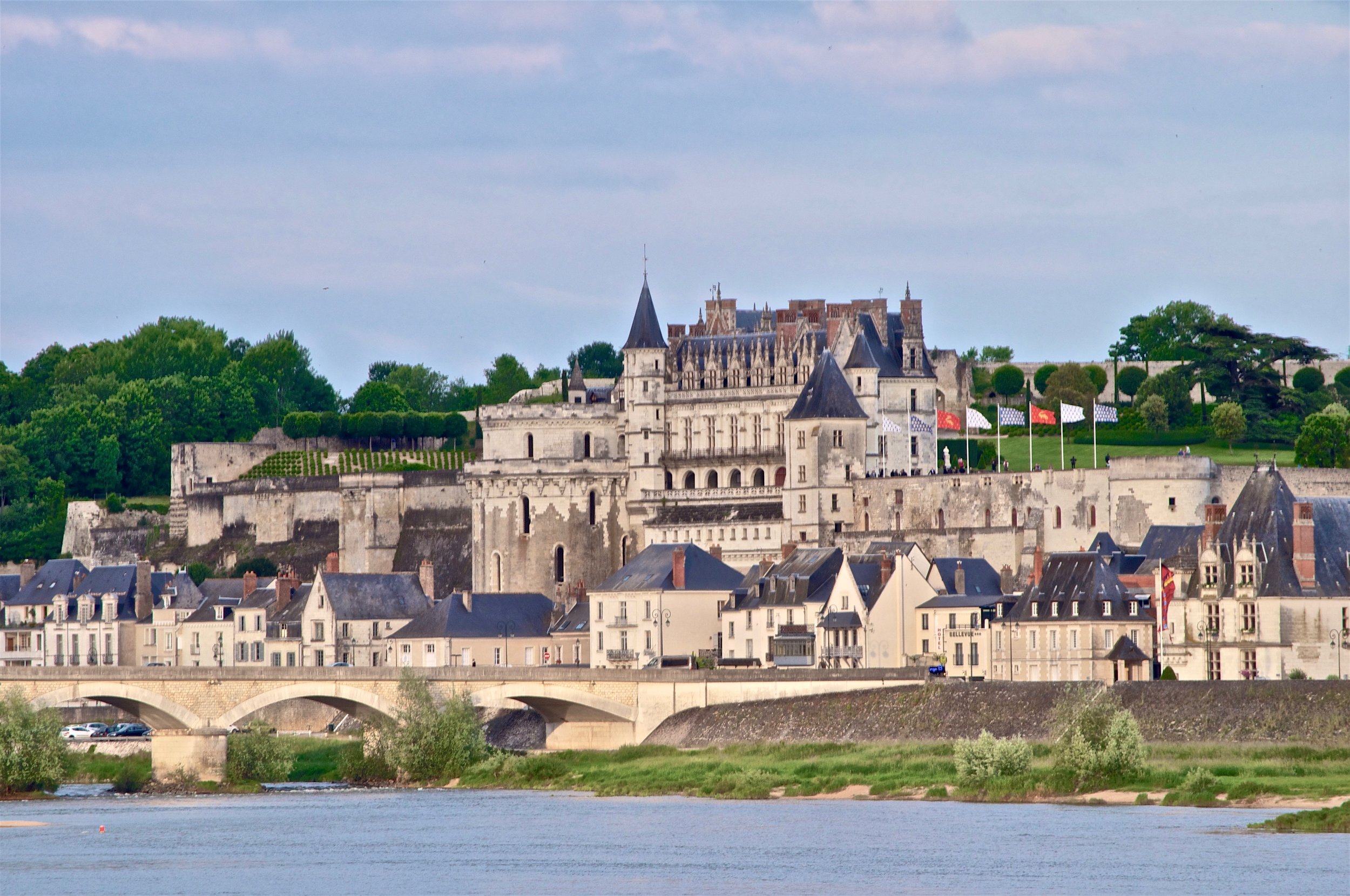
The valley is witness to over a 1000 years of rich history which manifested into a profusion of opulent Châteaux commissioned by Kings, Dukes and Nobles. There are around 300 of them, many built or renovated in the 17th and 18th century in Renaissance style. Some are still owned privately, some are with the government and others are converted to hotels.
The most famous Châteaux are:
Château de Chambord:
(50 min from Amboise)

This is a monument of extravagant architectural grandeur in the distinctive French Renaissance style. It was commissioned in the 16th century by Francois I. It has over 400 rooms, 282 fireplaces and 84 staircases with some rooms still retaining the opulent furniture from that era. Outside, there are formal gardens and a horse drawn carriage ride around the grounds is available. It is surrounded by an extensive forest reserve with many walking trails.

Chambord is the biggest and the most visited Château of the Loire valley.
Château de Cheverny:
(20 min from Chambord)
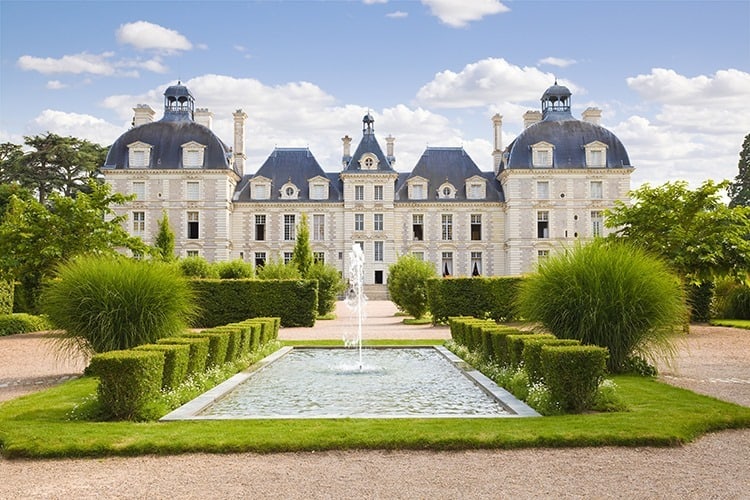
This Château was built in the 17th century by the Hurrault family who still owns it. It has a perfectly symmetrical design and showcases the Louis XIII classical style. The interiors are grand and reflect the history of the living style. There are priceless paintings, tapestries and rare furnishings throughout the Chateau. It is the inspiration behind ‘Marlinspike Hall’ in the TinTin comic books.
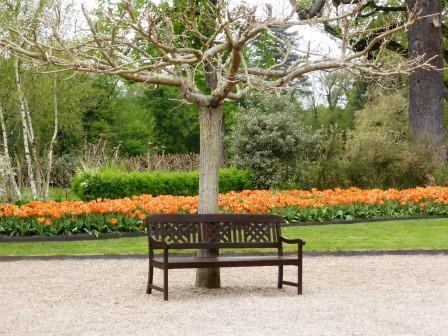
The grounds are beautiful with huge lawns and flower beds. In the springtime, the tulip gardens are worth a visit. One can go around in a golf cart or by a canal boat ride.
Châteaux de Chenonceau:
(45 min from Cheverny and 20 min from Amboise)
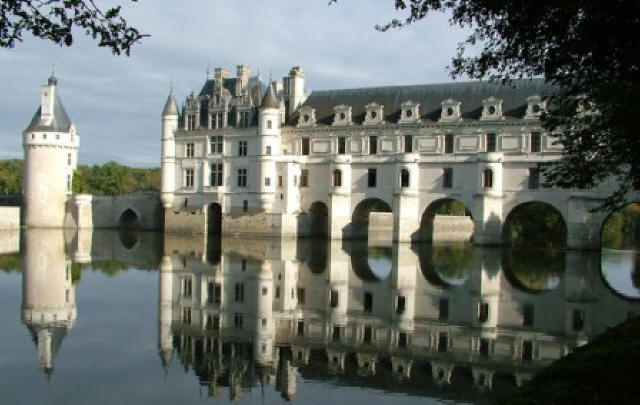
This Château is also very popular amongst the Loire valley Châteaux for its Renaissance style design and beautifully preserved interiors. The arches spanning the Cher river make it quite unique. It is also known as the Ladies Château as a result of the influential women who contributed to its design and destiny over the years from 1513 when the main structure was first started.

The bedrooms are exquisite and the collection of paintings and tapestries is awe inspiring. The French style landscaped garden adds to the ambience.
These three châteaux can be visited in a day from Amboise. The next two can be visited on the next day along with a vineyards visit near Tours.
Château d’Azay-le-Rideau:
( 50 min from Amboise and 25 min from Tours)
This Château is set on an island of the River Indre, creating a beautiful reflection in its waters. It is a masterpiece of Renaissance architecture. It was built in the 16th century and is now owned by the French Government.
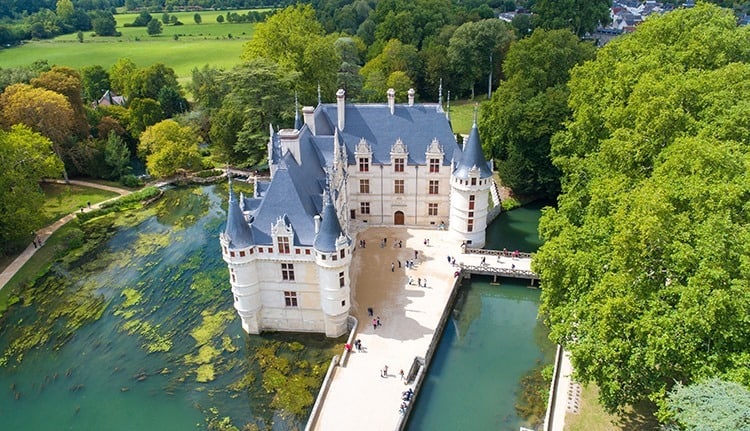
It is one of the few Châteaux whose interior is fully furnished and richly decorated. There is an English style park surrounding the Château.
Château de Villandry:
( 15 min from Azay-le-Rideau and 25 min from Tours)
This Château is well known more for its exquisite gardens than the building itself. It was built in the 16th century with the gardens in the Italian Renaissance style.
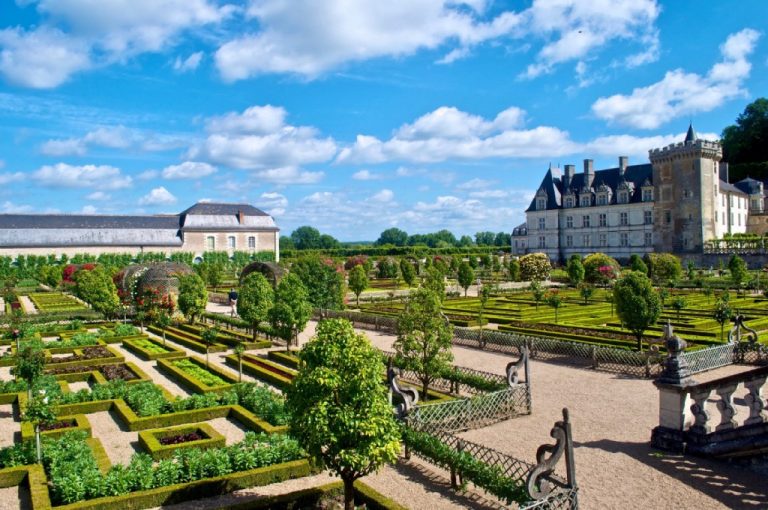
The estate features vegetable gardens, hedge garden, water garden, herbs, fruit trees and a large pond.
Other interesting Châteaux are:
- Château d’ Amboise
- Château de Blois
- Château de Chaumont
- Château du Clos Lucé
- Château d'Ussé

There are hot air balloon rides available to enjoy the panoramic view from the sky.
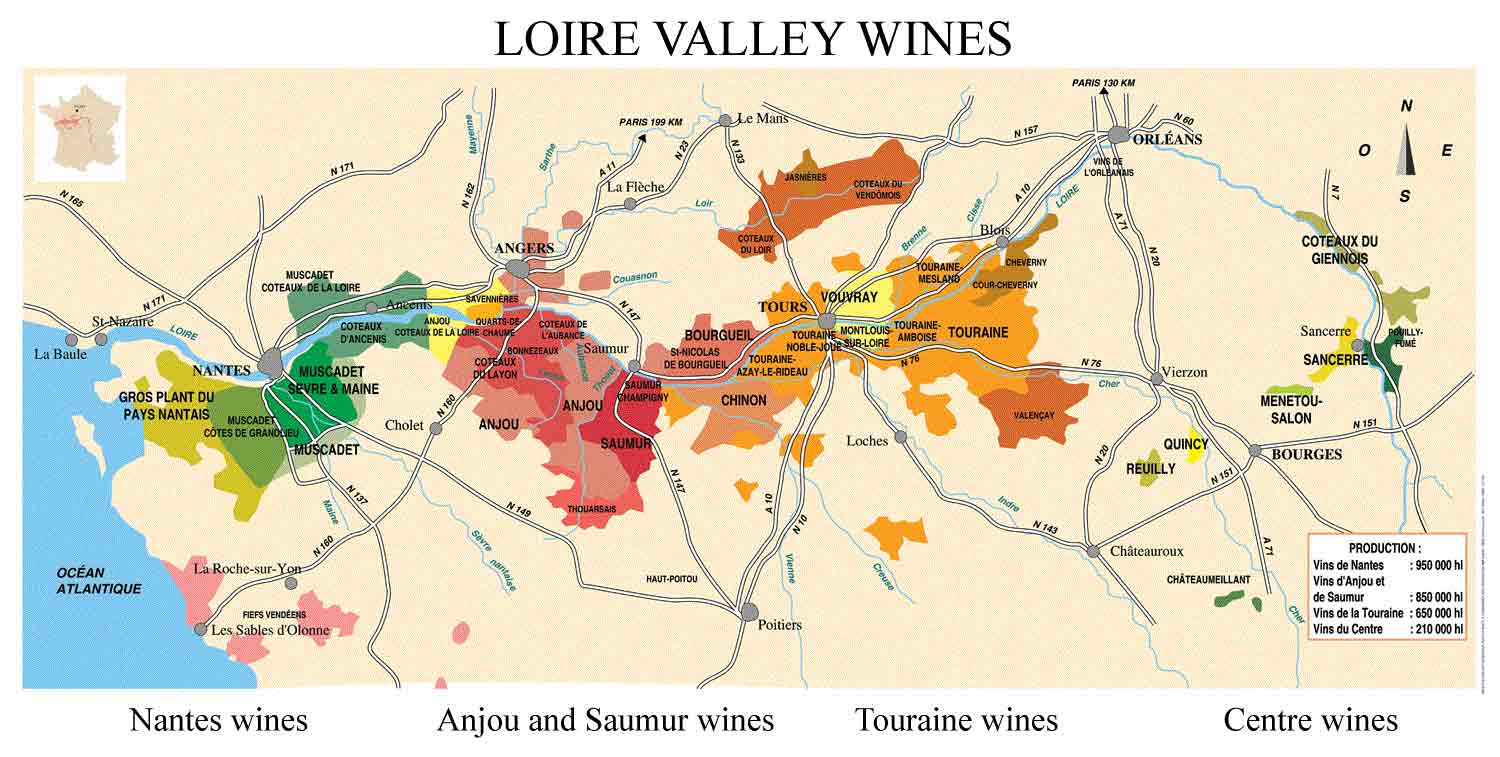
The Loire valley region has a long history of wine making dating back from the 1st century. The regions producing wines are on an 800 km route between Sancerre near Orléans in the east and Nantes in the west. The majority production is of White wine, followed by Red wine, Rosé, Sparkling and Dessert wines. These wines have the best quality to price ratio in France.
White Wines:
These are mainly produced from:
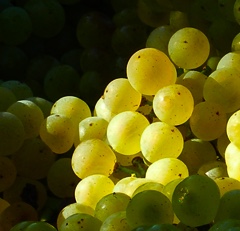
Chenin Blanc: These grapes are used to make from very dry to sweet as well as sparkling wines. The wines pair with almost all kinds of food due to their high level of acidity. There is a distinct fruity flavour and aroma which make them very popular.
Sauvignon Blanc: The world famous Sancerre and Pouilly Fumé wines are made from these grapes. The flavours are of green apple and plum with undertones of herbs and flowers and some minerality.
Melon de Bourgogne : This is the dominant grape of the area around Nantes in the west. The wine produced is known as Muscadet. It is a fresh, full flavoured wine best drunk young. It exhibits the salty minerality of it’s vicinity to the sea.
Red Wines:
Grapes for Red wines are:
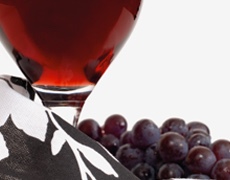
Cabernet Franc: This grape is mostly found in Saumur and Touraine. The wine is light and refreshing.
Rosé Wines:
Gamay : This grape is used for Rosé as well as Red wines. It is acidic with floral, fruity notes.
Sparkling Wines:
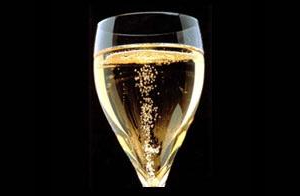
Crémant sparkling wines are made here in large quantities, second only to Champágne. They are made mostly from Chenin Blanc, but some from Cabernet Blanc, Pinot Noir and Chardonnay too.
Loire valley wine tasting:
There are many ways of tasting the wines:
There are over a thousand vineyards open to the public, some with massive wine cellars. Then, there are wine-tasting walks in the vineyards, trips on traditional boats, stays in the vineyards and entertaining wine events.

Some well known wineries are:
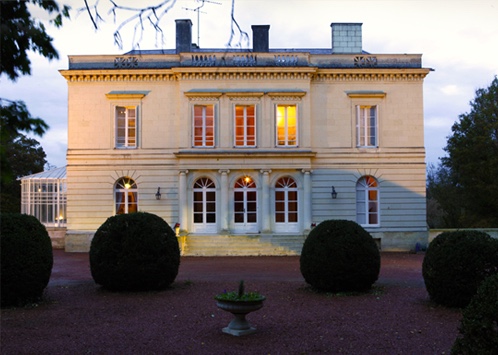
This is a family winery since 1859, born of an exceptional passion and a knowledge of the land and the vines. They create their unique range of wines in their cellars carved out of the tuffeau limestones. A visit is possible to these cellars which are 12m under the streets of Saumur. Tastings are offered in a boutique area.
Since 1851, this winery has produced excellent wines in the traditional method in their vast underground cellars. A walking tour and bike tours are available in the 5 km long cellars with a tasting included. There are artistic carvings and a sunken cathedral in the caves.
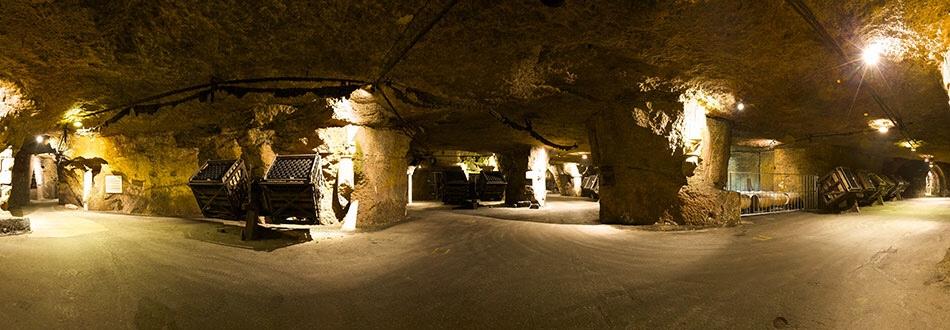
The Bourgeois family has, for 10 generations, passionately crafted unique wines in the Sancerre, Pouilly-Fumé area. A vineyard visit, cellar tour and tasting are offered. They have a hotel and a restaurant too where traditional local cuisine is served.
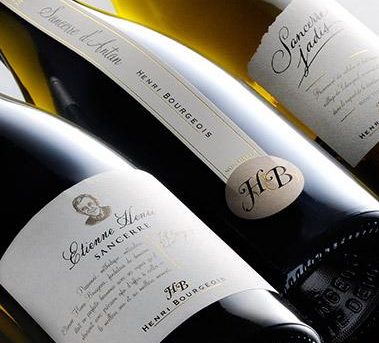

This is one of Sancerre’s famous properties producing wines of amazing clarity and definition. The farming is totally biodynamic and quality is preferred over quantity.
Gastronomy in the Loire Valley:
France and Gastronomy are synonymous. French gastronomy is unique and their greatest national pride. Each region has its own culinary speciality and lifestyle. French people take time to eat and enjoy their meals. It is a way of life. It is no surprise then that the highest number of Michelin starred restaurants are in France.
Some of them are listed below:
Château de Pray Restaurant: 1 Michelin *
In an idyllic location in a park overlooking the Loire river near Amboise, this is the restaurant of the beautiful Hotel Château de Pray. The dining area is a troglodyte room, full of light and views. The cuisine is subtle but flavourful with a dash of modern flair.
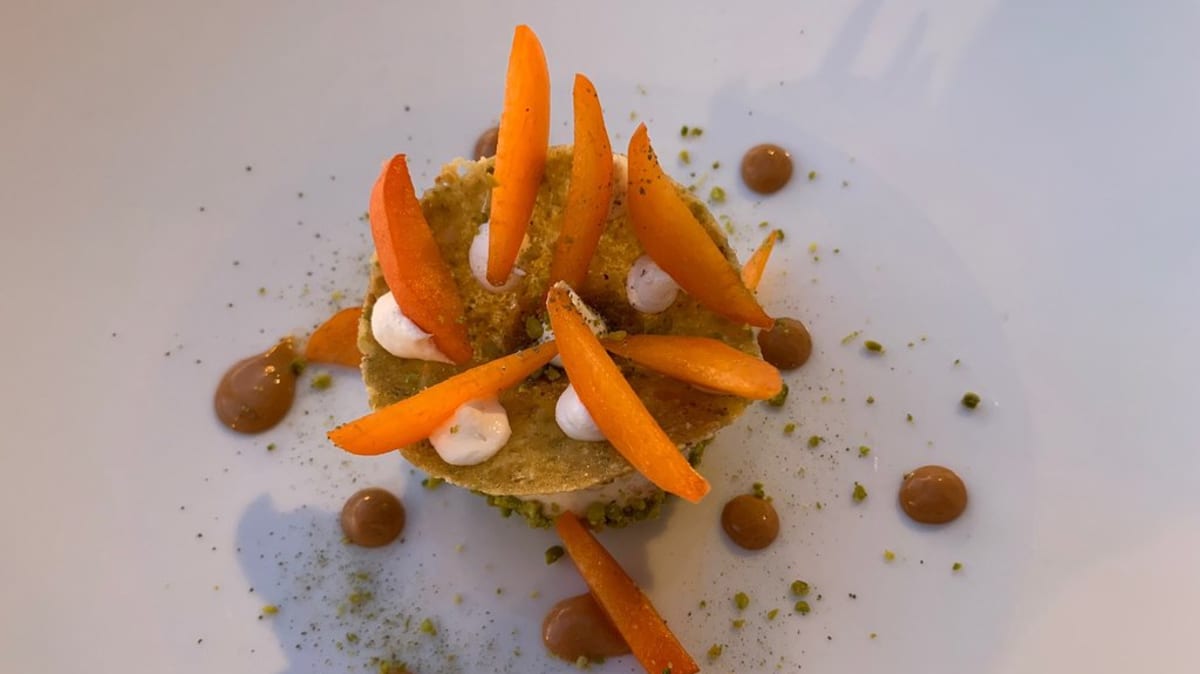
Les Hauts de Loire: 2 Michelin*
The restaurant, as part of the hotel, is in tranquil surroundings. It is a former hunting lodge built in the 19th century, 18 km from Blois.
The food is a modern interpretation of the French classics, using fresh fruits and vegetables. The result is a flawless gastronomic experience reflecting the chef’s incredible creativeness.
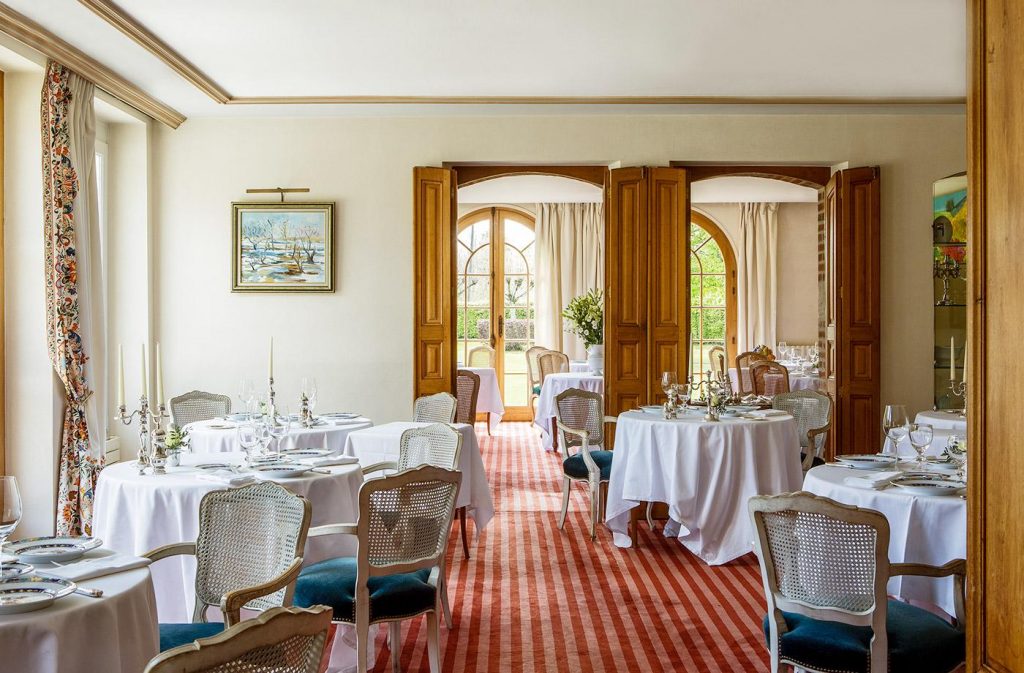
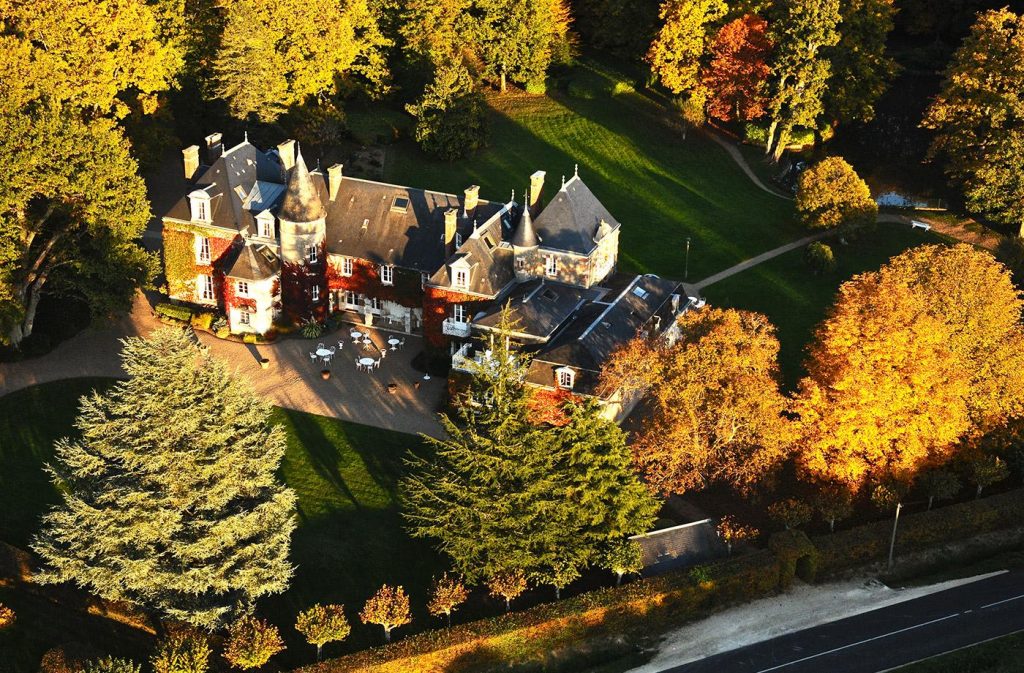
La Maison d ' à Côté: 2 Michelin *
This gourmet restaurant offers a unique culinary experience using local produce and creating culturally rich food. It is between Blois and Chambord.

Épernay: 2 nights
(3.5 hours by car or around 4 hours by train from Amboise)

Champágne has forever been associated with luxury, celebration and romance. And the Champágne region, comprising five sub regions and the cities of Épernay and Reims, is home to this most prized sparkling wine. It was here that the traditional method of sparkling wine production was both invented and perfected and now emulated worldwide. But only the sparkling wine made in this region can be called Champágne .

Champágne’s minerality stems from the limestone and chalky soil; and the cool, continental climate provides ample acidity. The three primary grapes used are Chardonnay, Pinot Noir and Pinot Meunier.

The wine can be from very dry to sweet i.e. Extra Brut, Brut, Extra Sec, Sec, Demi-Sec and Doux. Champágne is made by blending the grapes to make a still wine and then mixing the still wines before using the secondary fermentation method (Méthode Champenois), which results in the unique bubbles.
The producers of Champágne are: Maisons (Houses), Cooperatives and Vignerons (Growers).
Each blend the grapes in their own unique style and their reputation is based on the resulting wines. So, unlike traditional tasting on the vineyards, a lot is also on offer in the vast cellars of the big houses.
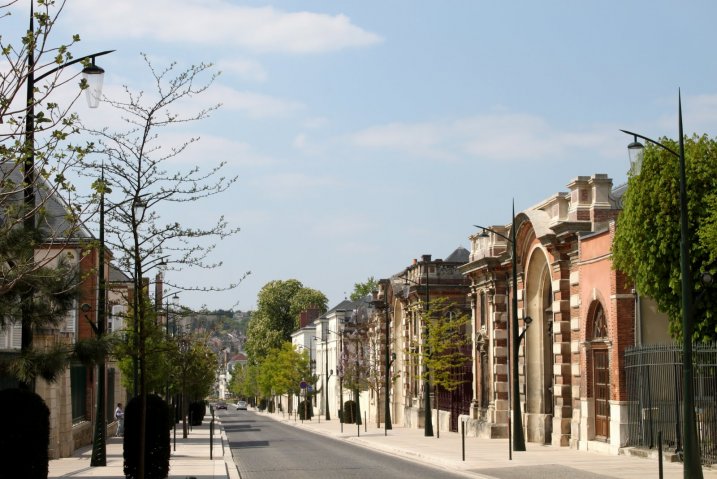
A trip to Épernay is a Champágne lover’s dream come true. The world famous Avenue De Champágne, 1 km long, is a showcase for the major Houses, and the 200 years old cellars below the road store over 200 million bottles of bubbly. There is a virtual maze of about 110 km long limestone tunnels and caves around 30 m underground. They exist from the 17th century but started getting used extensively from the 19th century.
Avenue de Champágne is lined on both sides with magnificent mansions constructed by the Houses, originally as private residences or company headquarters. It is now a UNESCO World Heritage site. There are many famous Houses in Épernay.
Cellar tours and tastings are available on appointment.
Some of the well known Houses are:
Moët & Chandon, founded in 1743, is the biggest name in the Champágne world. They are part of the luxury goods company LVMH. Their wine embodies their unique style, distinguished by its bright fruitiness, seductive palate and elegant maturity. They have the largest vineyards area in Champágne and their cellars extend to 28 km in length underground.
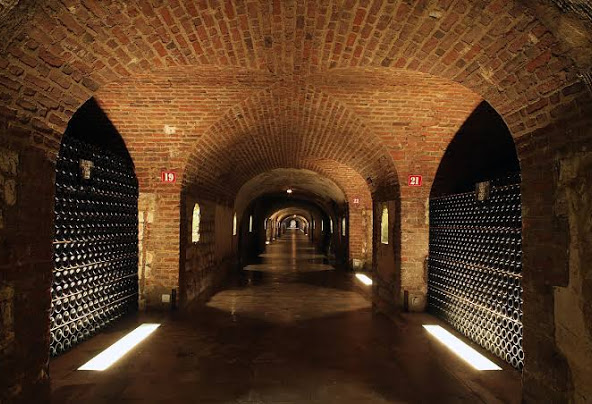
The House produces around 30 million bottles of Champágne annually and are the owners of the luxury vintage brand Dom Pérignon.

Dom Pérignon was created in the 1920’s and named after a monk who lived in the 17th century in this region. He had first developed the technique of making white wine from red grapes and blending the wines. Dom Pérignon is a blend of Chardonnay and Pinot Noir grapes.
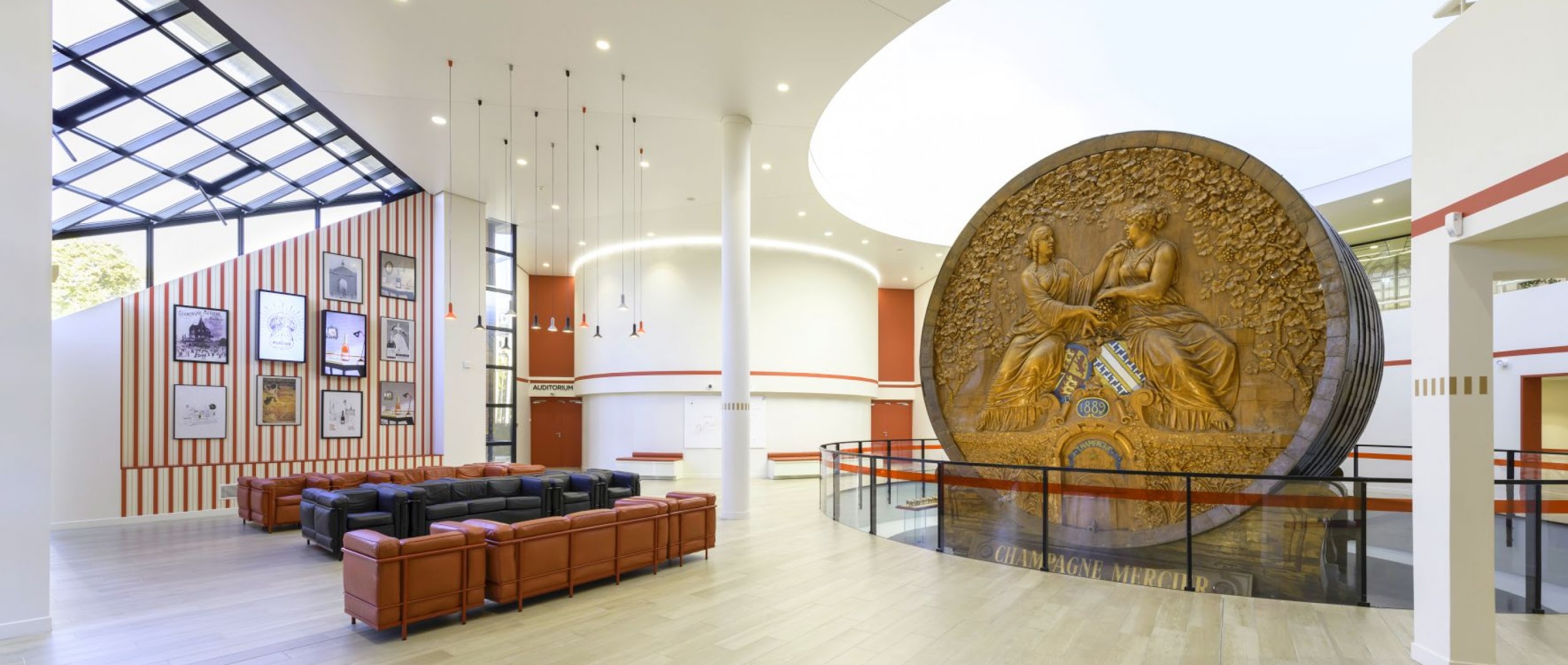
This House was founded in 1858 by Eugène Mercier who was a visionary. He created a Champágne ‘for all occasions’. Touring the 18 km long cellars of Mercier is a unique experience. There are huge sculptures carved into the walls and giant barrels.There is a guided train ride showcasing the history and the wines of the brand.
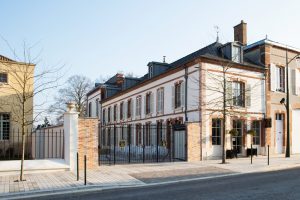
The house of Leclerc Briant has been creating Champágnes in an innovative style since 1872. They are counted amongst the pioneers of biodynamic and organic viticulture in Champágne.
Guided tours of their vineyards and cellars are offered. They also own a boutique hotel in an elegant 18th century residence called Le 25bis by Leclerc Briant on Avenue de Champágne.
Reims:
(35 min from Épernay)
Reims is a bigger city than Épernay. Many Champágne Houses have been present here since the 18th century. Some of them are:
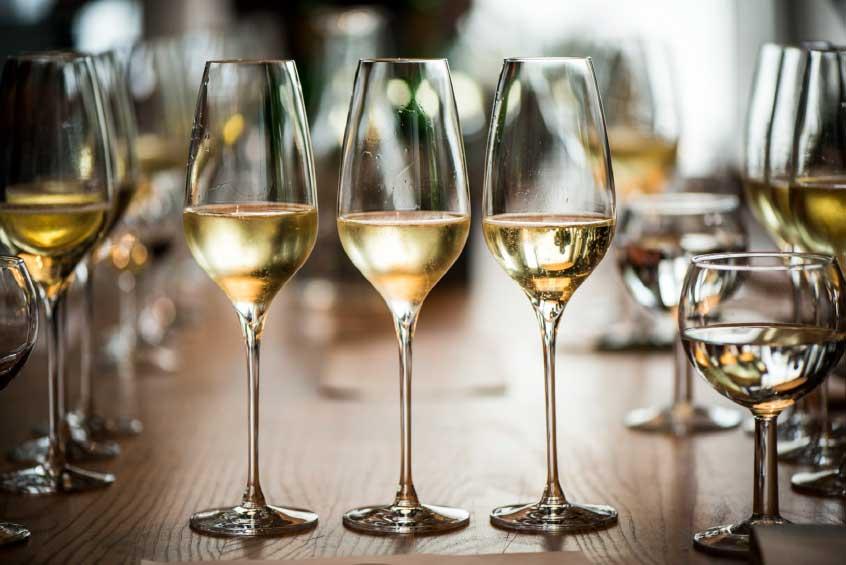
This Champágne house has been managed by the Taittinger family for nearly a century. Their aim is to pursue excellence in all that they achieve. They are one of the region’s largest producers with around 6 million bottles of annual production.
There is a dominance of Chardonnay in their wines. The cellars are 18 m below ground and are distinctly Gothic in style. After the tour, an elaborate tasting is offered.

Now owned by LVMH, this Champágne House was founded in 1772 and at present is one of the largest in the world. They also own some of the finest vineyards in the region.
Their house style shows a dominance of Pinot Noir which gives their wines strength, complexity and elegance.Vineyards visit and cellar tasting are both available by appointment. Their cellars are 28 km in length.
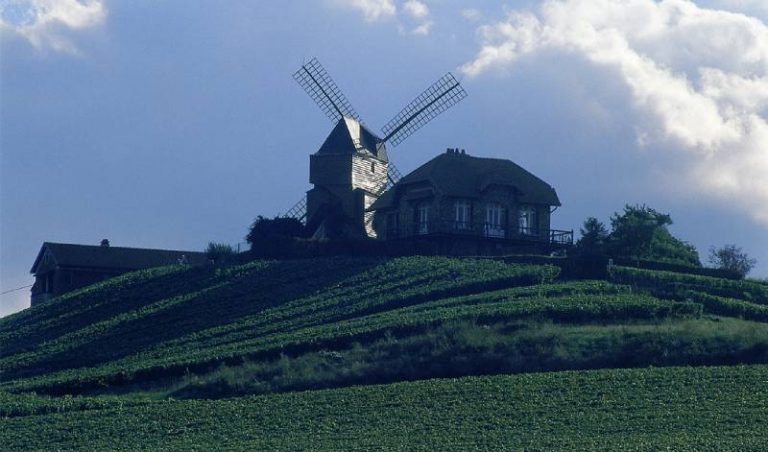
Maison Mumm was established in 1827 with the motto ‘Only the best’, which they are following till date. The House has patented several high-tech processes, which all help ensure the quality of the wines. There is a balance between freshness and intensity. Their bottles with the red ribbon sash are world famous.

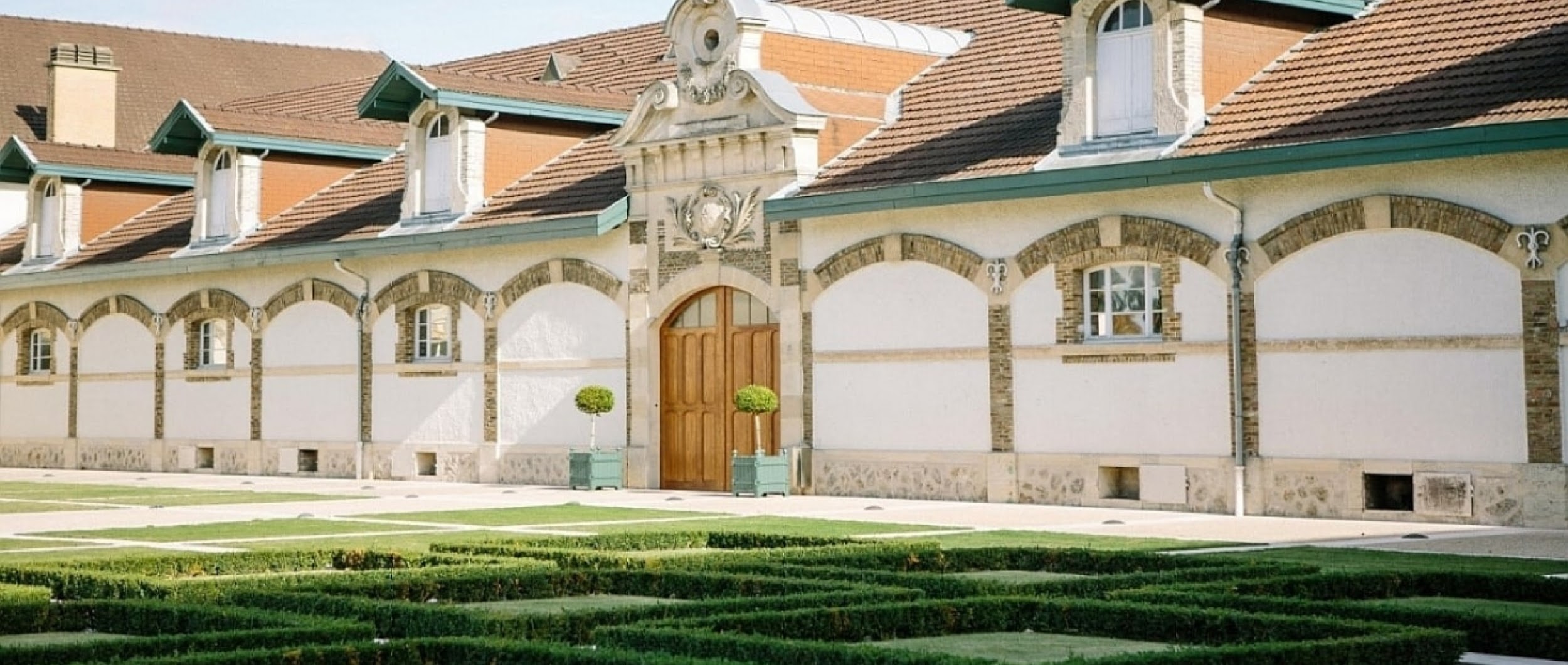
Maison Ruinart was the first established House of Champágne in 1729. It was inspired by the intuition of a Benedictine monk Dom Thierry Ruinart, who was well ahead of his time. Chardonnay is the soul of Ruinart. A tour of their 8 km long chalk quarries, followed by a tasting session is a unique experience.
Ruinart has been associated with art too. They provide support for major art fairs around the world. It is now a part of the LVMH group.
Champágne region sightseeing:
Reims Notré-Dame Cathedral:
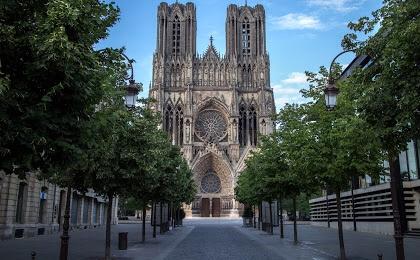
This is a UNESCO World Heritage cathedral, built in the 9th century in the Gothic style. French kings from the 9th to the 19th century were crowned in this Cathedral. It’s stained glass windows and carvings are world famous.
Champágne Route:
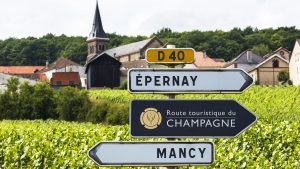
To enjoy the landscape of the region, the Champágne route is a well signposted road winding through the vineyards, amongst Châteaux, Churches and picturesque villages. There are different circuits, numerous walking trails and cycling paths. One can visit some Growers (small, family run houses) and learn about the process of wine making.
Paris: 2 nights
(1 hour 30 min from Epernay)
France has a culinary reputation which is hard to beat for any other country. The French are known for their love of haute cuisine and desserts. They also produce superb melt in the mouth pastries which are available in Patisseries across the world. So, when in Paris, to taste some of these pastries would be a gourmet dream come true. The smells wafting through the innumerable Pâtisserie windows will draw one in like a magnet.
Croissants:

This delicious pastry, though considered French, has its origins in the Austrian Kipferl. It was made for the first time for Marie-Antoinette in 1770 in France and subsequently named Croissant.
The French bakers perfected the shape and changed the recipe by adding more butter to make it more flaky. Slightly sweet yeast dough is used and the result is an airy texture and a rich flavour.
Nowadays, Croissants are also filled with chocolate, jam, raisins and cream cheese. They are mostly had at breakfast with a cup of coffee.
Macarons:
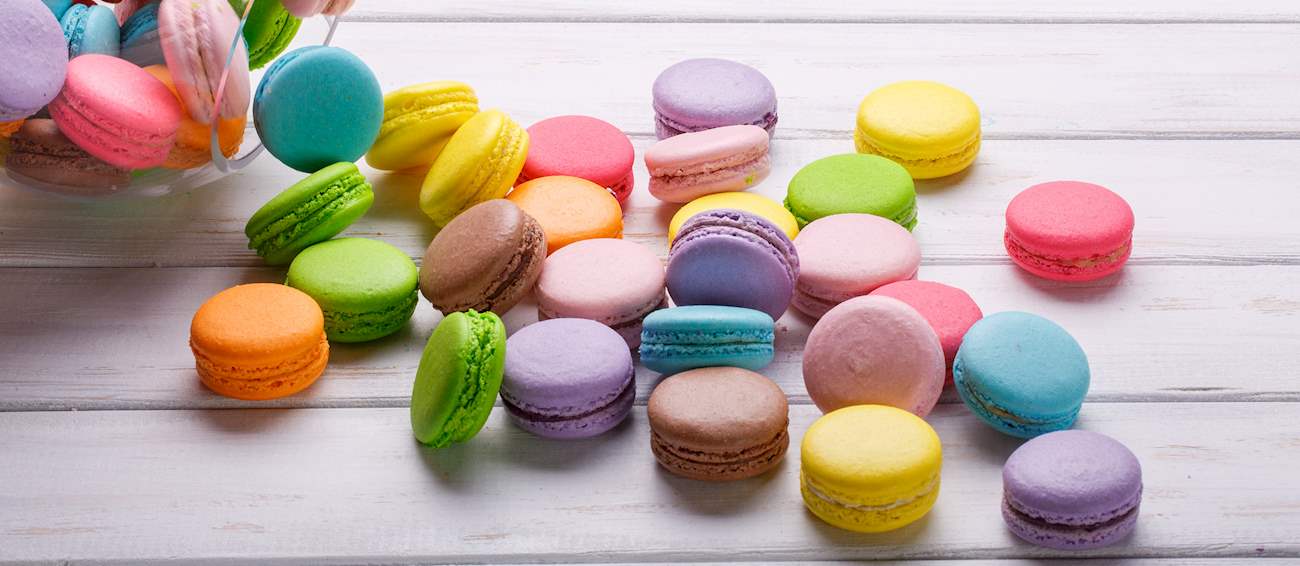
This type of cookie was first made in Italy but the idea to sandwich them with a filling was born in Paris. Ladurée then made it world famous.
Macarons have buttercream or ganache as filling between 2 almond cookies. These meringue based cookies are light and crunchy on the outside and chewy in the middle. Macarons are now popular throughout the world, and are made in various sizes, colours and flavours.
Éclairs :

Éclairs originated in France in the 19th century.They are choux pastry filled with a flavoured, sweet cream and glazed icing on the top. The most famous one is the Chocolate éclair, but one can also find Vanilla, Strawberry, Lemon, Coffee and many other flavours.
Some of the famous Patisseries are:
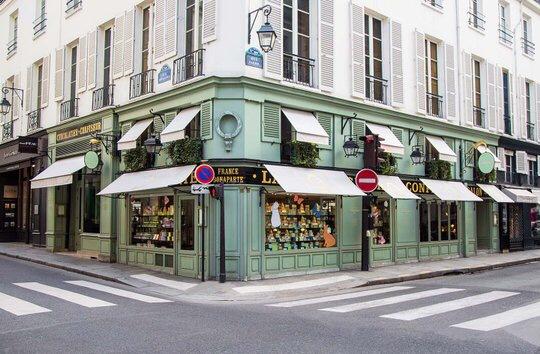
This establishment was first opened in 1862 in Paris by Louis Ernest Ladurée. Now, they are a world famous chain with 6 stores in Paris and many others in Europe, USA and the Middle east. Ladurée is especially known for its Macarons which are made from a recipe which remains their secret. They have a stunning array of varieties and flavours available.

Ladurée is synonymous with French luxury pastries. Their pastel green boxes with pink ribbons are highly coveted as gifts.

Pierre Hermé, the Pâtissier, was voted the best Pâtisserie chef in the world in 2016. He has been called the Picasso of pastry by Vogue magazine. He is like an artist, creating his own flavours and tastes and even sketching the creation out before making it. He has been credited with changing the world of pastry in France.
Ispahan is one of Pierre Hermé’s signature flavour- a combination of Raspberry, Rose and Lychee. It is available in Macarons, Croissants and Chocolates.
“Macarons are just a few grams, with the power to make us happy.” Pierre Hermé

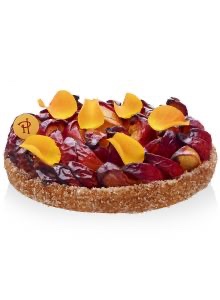
They have expanded to many outlets in Europe, Asia and the Middle East.

Stohrer is Paris’ oldest Pâtisserie having been opened in 1730 by Nicolas Stohrer. It is an elegant place offering pastries and desserts including it’s own speciality like Baba au rhum ( Rum soaked sponge cake).

It’s original store is now listed as a historical site.
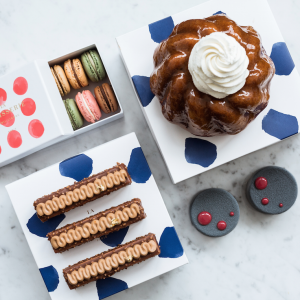
Cyril Lignac is a celebrity chef on account of his TV shows and more than 40 cookbooks.
The first signature pastry by chef Cyril Lignac is Equinoxe, made with bourbon vanilla cream, caramel and praline with a hazelnut biscuit. The pâtisserie’s croissants are also very famous in Paris. They have 5 boutiques across the city.
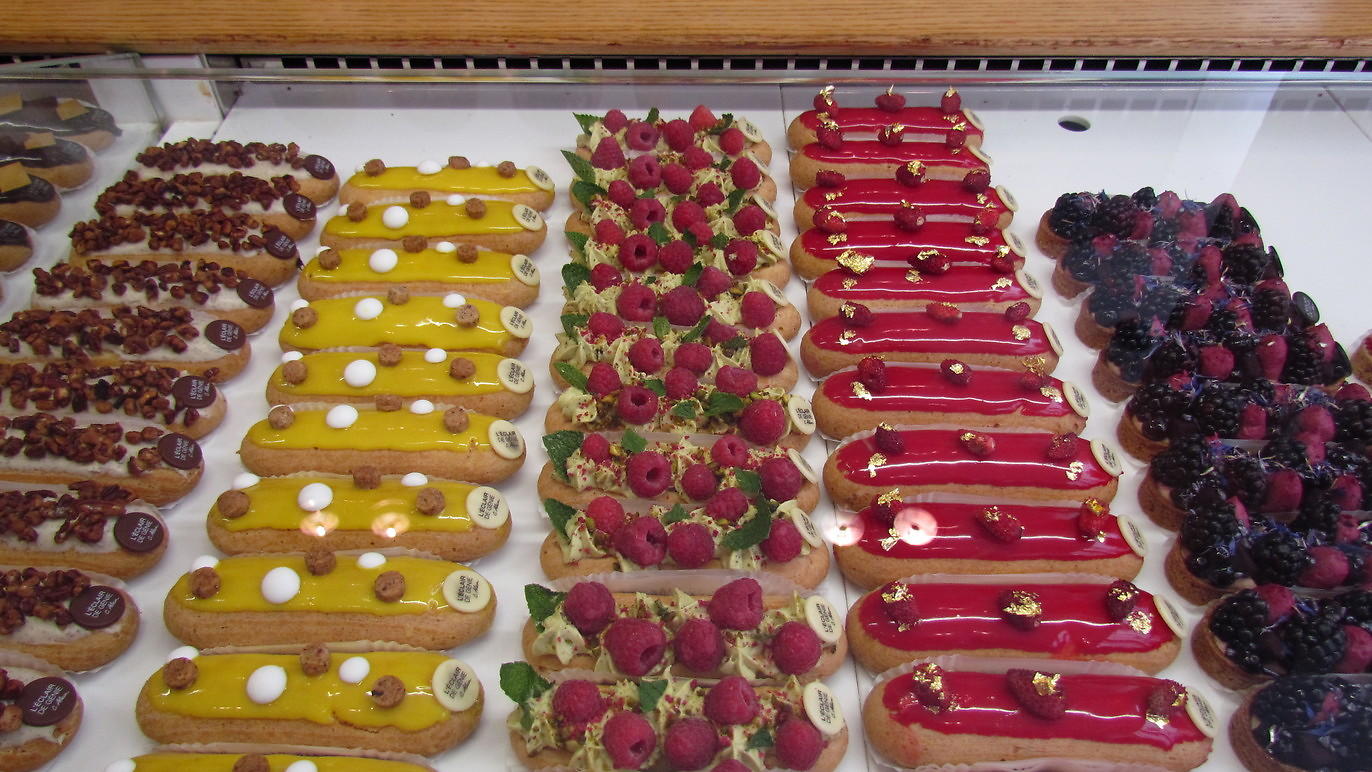
At this pastry shop, chef Christophe Adam serves his own interpretations of the éclairs, in the process, reinventing this classic French treat. There are exciting new combinations like Rose-Lichee, Lemon Meringue, Passionfruit, Yuzu and Salted Caramel. The finish is superbly glazed with the fruits shining like jewels.
Pastry making classes:
Paris gives the visitors an opportunity to learn how to make the acclaimed pastries too. A number of cooking institutes are there who offer from a 3 hours class to a week long course.
Some of them are listed below:
After enjoying the French hospitality, this culinary journey now comes to an end with an onward journey from Paris.

